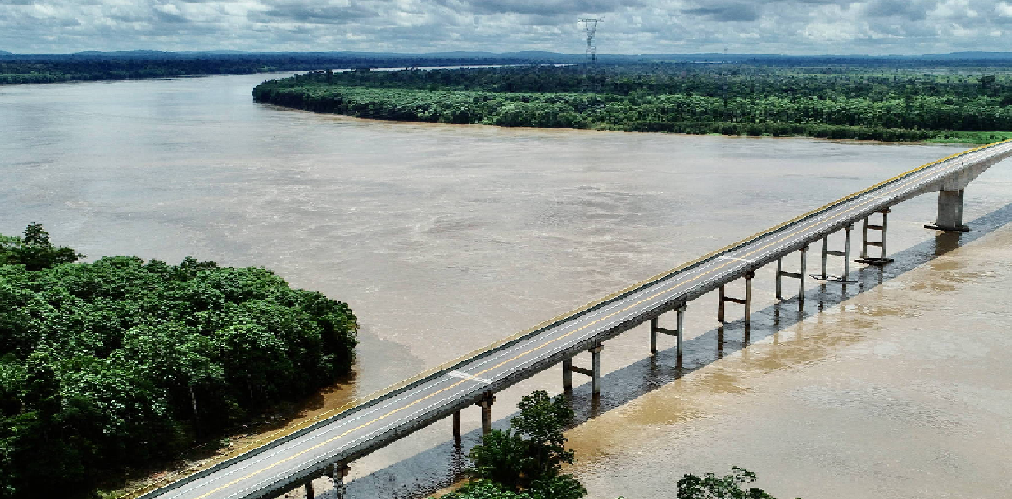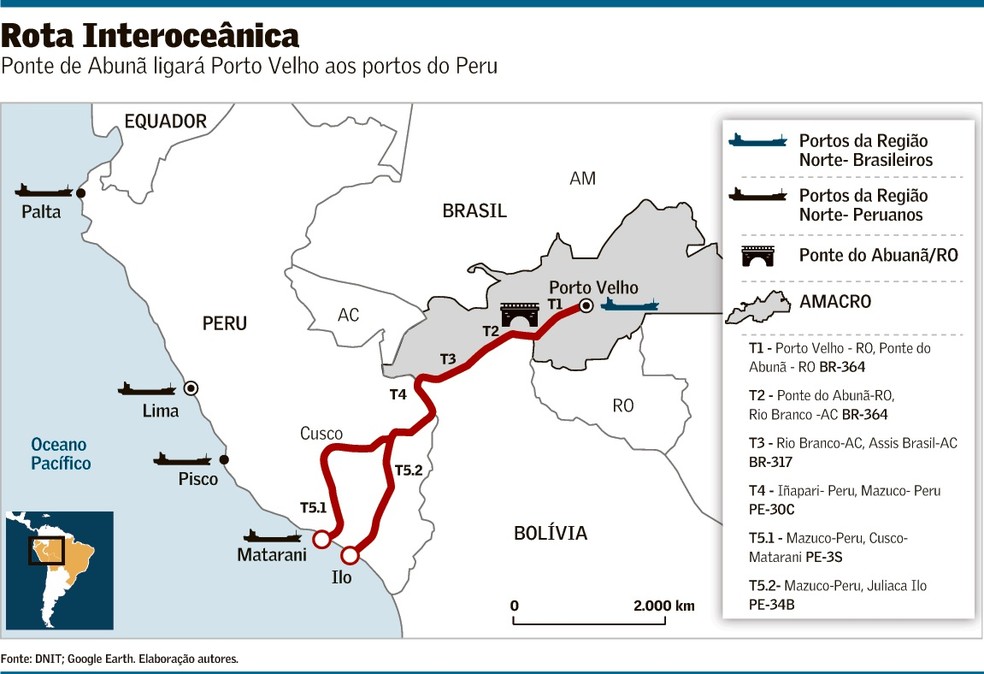
Bridge untangles state of Acre logistics and paves the way for Oceanic route
May, 10, 2021 Posted by andrew_lorimerWeek 202120
Amid international pressures against deforestation in the Amazon, President Jair Bolsonaro inaugurated the Abunã bridge, a 1,517-meter project at the confluence of the Madeira and Abunã rivers, in which R$ 160 million were invested. This will facilitate access to the ports of the Pacific, via Peru, from one of the areas in Brazil seeing the greatest acceleration in foreign trade activity: Amacro, an acronym for Amazonas, Acre and Rondônia, three states in Brazil’s northern region.
One hundred and seventeen years after being incorporated into Brazil, Acre will finally be connected by road to other Brazilian state capital cities. The Minister of Infrastructure, Tarcísio Gomes de Freitas, will be present. “We are delivering more than a bridge; we are carrying out a national integration project, linking Acre and the North region to the country’s road system”, he said, in a note.

The project creates a possible a closer exit to and from Asia, Brazil’s main consumer market, and creates an environment for Acre to be a logistical “hub”. The bridge also faces the challenge of not repeating the mistakes seen in the model of economic expansion in Mato Grosso and or in the area called Matopiba (Maranhão, Tocantins, Piauí and Bahia): deforestation, followed by livestock grazing and grain planting.
It is, however, what can be seen in the numbers, according to the technical note “The Abunã Bridge and the Integration of Amacro to the Pacific”, coordinated by researcher Pedro Silva Barros, from the Institute of Applied Economic Research (Ipea).
In the last 20 years, exports from Acre have been multiplied by 20, those from Rondônia by 23, while the country’s total has grown four times in nominal dollars.
But, currently, 39% of sales abroad made by Acre are made of wood. In Rondônia, the share of the product was 93% at the turn of the century, but today 80% is meat and soy. In Amazonas, the share of industrialized products in shipments dropped from 50% in 2000 to 30%, compared to the advance of primary products.
Amacro is an opportunity to create a more sustainable model, said Barros. He believes that it is possible to increase the production of meat and grains using the areas that have already been deforested. At the same time, as it is less days away from Asia, the region can benefit from exporting fresh meat, which is 20% more valuable than frozen meat. There is also space for regional products.
The bridge will not bring about any miracles for the local economy in the very short term, said the researcher. But it is in line with an already established trend: the migration of Brazilian production to the west of the country, in parallel with the growth of Asia and the Middle East as the main destinations for Brazilian exports. This economic pull makes overcoming the obstacle of the Andes Mountains increasingly likely.
The Abunã bridge integrates the so-called “Interoceanic Route” or “Estrada do Pacífico”, a paved route almost 2,400 km long, which connects Porto Velho (Rondônia) to San Juan de Marcona, on the Peruvian coast, providing access to the ports of Matarani and Ilo. In addition to carrying Brazilian exports, the route will allow for cheaper freight rates on fertilizer imports reaching Rondônia and Mato Grosso.
The fact that the bridge runs over the Madeira river, which itself reaches the Atlantic Ocean via Brazil’s northern ports, means that Acre can become a logistical “hub”. This route might be interesting for Peruvian exports to Europe and the east coast of the United States.
Creating more outlets for Brazilian products to reach the Pacific Ocean is also geopolitically important, notes Barros. Today, for Brazilian products to reach Asia, there are basically two routes: via the Panama Canal or via the Indian Ocean. It is a risky situation, given the tension between the United States and China, he says.
The Ministry of Infrastructure estimates that 2,000 vehicles will cross the bridge every day. Without it, the crossing was made on ferries, and took close to two hours, at the cost of up to R$ 200 per truck. The journey will now take five minutes and will be free of charge.
The bridge is connected to the BR-364 RO, where nearly 8 million tons of grain pass every year, which carries exports from the state’s production as well as produce from the western and northern regions of Mato Grosso.
Source: Valor
-
Ports and Terminals
Dec, 11, 2019
0
National Secretariat of Ports and Waterways Transport studies implementation of “Port Community Systems”
-
Ports and Terminals
Jan, 12, 2022
0
Lockdowns in China affect ports and businesses
-
Other Logistics
Nov, 14, 2022
0
Brazil’s Rumo profit soars on higher volumes, tariffs
-
Dec, 07, 2021
0
Canadian potash exporters secure supply for Brazil


